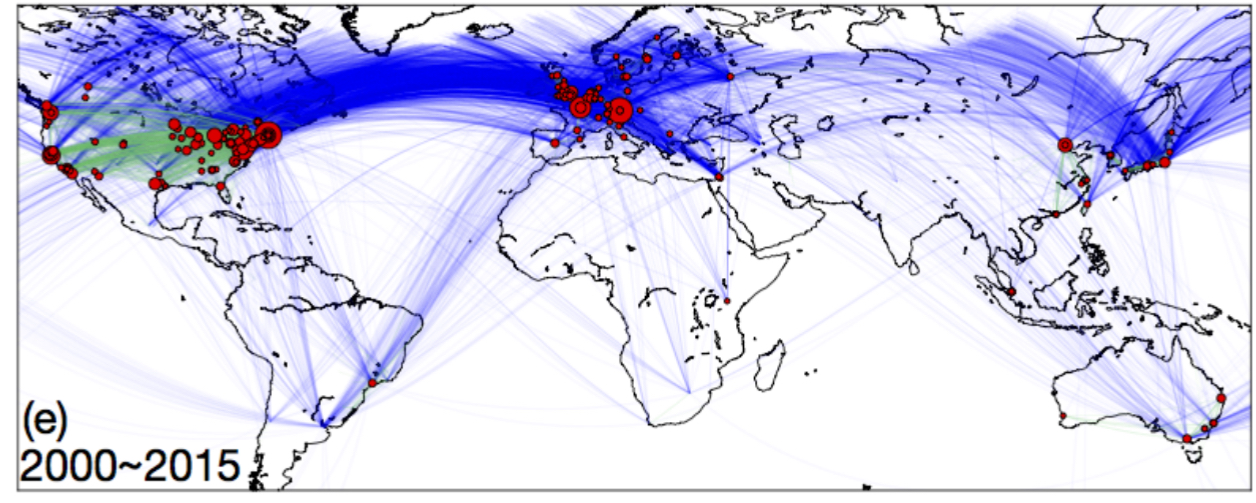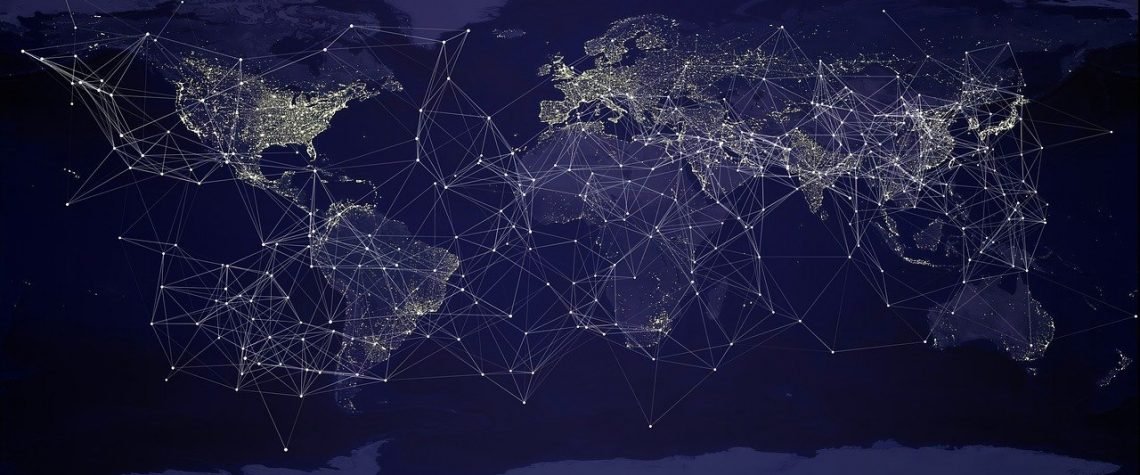Throughout history, scientific progress has been based on two forces in constant tension: competition and scientific collaboration. In this introductory article, we review how scientific globalization was achieved and to what extent it has favored these forces.
La science n’a pas de patrie, parce que le savoir est le patrimoine de l’humanité, le flambeau qui éclaire le monde
Louis Pasteur, 1876 (Vallery-Radot 1939, p. 309)
The origins of scientific globalization
Science emerged as a by-product of sociocultural evolution, and the globalization of science as an exchange of scientific knowledge across great distances dates back to classical antiquity, although it will not be until there are efficient mechanisms for the autonomous accumulation and dissemination of scientific knowledge that we can speak of globalization as such (Renn and Hyman 2012a). In order for the exchange of scientific knowledge across space and time to be possible, several elements are required:
- Codes: Latin was the lingua franca of science from the scientific revolution until the contemporary age, in which English has gradually acquired the status of universal vehicular language. The use of a reference language facilitates access to and dissemination of knowledge.
- Support: the reduction in the cost of documentary supports during the Renaissance, as well as the new possibilities of documentary reproduction (printing) favored the dissemination of knowledge. Digital technologies would make it possible to overcome analogical supports with new possibilities of reproduction and transmission of virtually infinite information.
- Channels: The era of conquests, explorations and empires provided structured trade and communication channels that would precede the digital communication networks of global reach. Administrative, cultural and scientific structures, as well as the techniques and technologies generated over time, would be fundamental to store, organize, control and disseminate knowledge (from archives and libraries to databases and scientific search engines).
- Sociocultural context: factors such as religion, politics, economics and cultural boundaries have, at different times in history, either limited or promoted scientific globalization.
Boost in science and technology and cooperation after the Second World War
Renn and Hyman (2012b) describe the history of knowledge, highlighting the period after the world wars as a key moment for scientific globalization. During the period of wars and between the wars of the 20th century, knowledge became an essential competitive factor, which promoted isolationist policies that led to the disintegration of international cooperation in science. However, it was at the same time a period of great scientific and technological momentum that would culminate in the clear predominance of the United States, marked by milestones such as the atomic bomb and, later, the conquest of space, information technology and the policies and infrastructures necessary for the deployment of digital communication networks.
Efforts to restore international cooperation in science have resulted in national and international institutions supporting international scientific collaboration, international research teams, global networks of researchers, and exchanges of researchers (efforts that are in tension with the constraints imposed by research protected by patent, trade secret, or national security). In their analysis of global scientific collaboration, Dong, Shan, and Wang (2017) have noted how collaboration among researchers has been central to the advancement of science in the last century:

Scientific collaboration in the world (Dong, Shan, & Wang, 2017). Blue lines represent the relative intensity of collaboration between institutions in different countries, while green lines represent national collaboration. The red dots and their size represent the most cited institutions of the period, as well as the volume of citations received.
The work of Dong, Shan and Wang describes, from the scientific output itself, a history of science in line with the contributions of Renn and Hyman. In it they note (2017, p. 1445) that, after World War II, “science began a gradual and continuous process of increasing collaboration, openness, and diversification; the average number of collaborators per scientist has at least quintupled; the age of the literature on which scientists work has increased by 90-100%, they have shifted from focusing on their own work to focusing on the work of others, and the countries advancing science have undergone radical geographic diversification.”
Opportunities for scientific advancement
For Sexton (2012, p. 39) “the intensification of research activity around the world has certainly been for the better; globalization, manifested in international collaboration on ‘Big Science’ projects, is a given; the Human Genome Project, the International Space Station, the Large Hadron Collider at CERN and ITER in France are just a few examples; the globalization of science has been a boom for humanity.”
Collaboration among researchers is therefore fundamental for scientific progress, and today there are many forms of scientific collaboration, beyond projects and co-authorship, facilitated by the possibilities of digital communication. Open publication of source data and research results, collaborative and open peer review, and scientific social applications, among others, represent new forms of collaboration in a field, Open Science, in which the identity of researchers takes on new relevance.
Cited references:
RENN, J. y HYMAN, M. (2012a). Survey: The Globalization of Modern Science. The Globalization of Knowledge in History. Berlin: Max Planck Institute for the History of Science, pp. 561-604. ISBN 978-3-945561-23-2. Available at: http://edition-open-access.de/studies/1/28/index.html
RENN, J. y HYMAN, M. (2012b). The Globalization of Knowledge in History: An Introduction. The Globalization of Knowledge in History. Berlin: Max Planck Institute for the History of Science, pp. 15-44. ISBN 978-3-945561-23-2. Available at: https://www.mprl-series.mpg.de/studies/1/5/index.html
DONG, Y., MA, H., SHEN, Z. y WANG, K. (2017). A Century of Science: Globalization of Scientific Collaborations, Citations, and Innovations. Proceedings of KDD ’17. Halifax, Canada: ACM Press, pp. 1437-1446. ISBN 978-1-4503-4887-4. DOI https://doi.org/10.1145/3097983.3098016.
SEXTON, J. (2012). A Measure of the Creativity of a Nation is how Well it Works with those Beyond its Borders. Scientific American, n. October, pp. 36-40. Available at: http://www.waterjpi.eu/images/documents/ResearchCooperationAndCreativity.pdf
